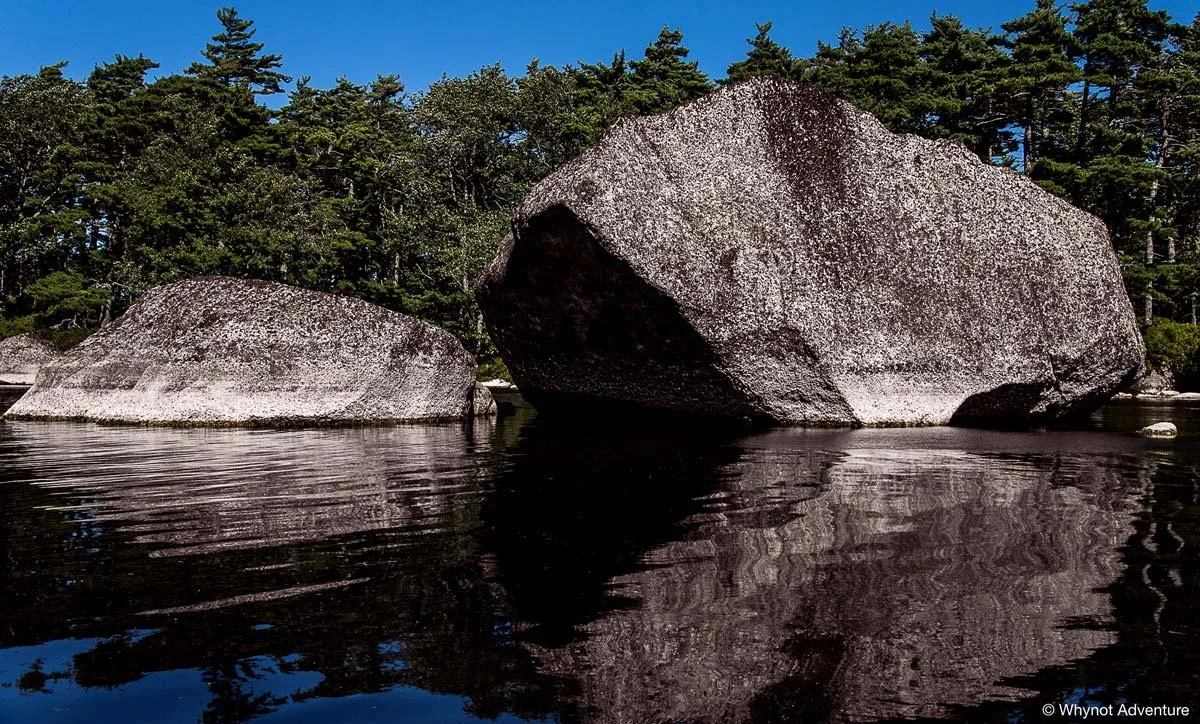No Frontcountry, No Problem
Regardless of the deep vein of adventure which runs through your soul, there exists any number of reasons to take a canoe down the Shelburne River and through the Tobeatic. That ‘extra’ day of travel shapes a palpable sense of remoteness, especially when coupled with the barren-esque landscape and long strands of Old Man’s Beard clinging to the scraggly spruce. The tannic water seems especially black, obscuring any notion of the Shelburne’s depth (trust me, it’s usually shallow) but also framing a palette of mesmerizing and ephemeral shapes in the foam below a run. These unique elements are only a few of many that give the Shelburne River its alluring personality.
But whatever, enough with the romance. There are a couple of pragmatic reasons you might want to find your way down the Shelburne River in the near future. Most notably is the Jeremy’s Bay Campground closure slated for 2020. I’m no Nostradamus, but I predict this is going to create a bit of pressure on Keji’s backcountry campsites which are remaining open despite the washroom construction. I also predict there are droves of front country campers who’ve been on the cusp of tackling a backcountry trip, and who now have their reason.
My simple and optimistic hope is a domino style reaction where the front country crew slide into trying the slack-country (backcountry, but no portaging) campsites, and the slack-country campers take on a portage or two. The die-hard and dare I say crusty ‘been coming to the park since the 70’s’ backcountry trippers who consider Site 40 an annual pilgrimage need only whet a paddle in Pebbleloggitch to find their way to the rugged and large Granite Falls campsite on the Shelburne River.
But, before I get too far down this path, I must come clean: Campsites along the Shelburne River and in the Tobeatic are rustic at best. This means there is usually a stone fire ring and one or two relatively flat spots to pitch a tent. You won’t find a picnic table, tent pad, iron firebox, bear hang cable or outhouse. Fret not, there are simple solutions to most of these.
Backcountry picnic table: turn your canoe over and rest it on two logs and pack a tiny collapsable backcountry chair to sit in. These offer much needed backrest and are endlessly more comfortable than sitting on a wooden board. Plus, the first time you flip a canoe over to use as a table you earn serious paddling cred. Remember to take a pic: if it’s not on instagram it didn’t happen.
Backcountry tent pad: just locate a generally flat spot. If there is a slope, most will be more comfortable with your head up hill and feet down hill. Most true backcountry tent spots require perfunctory grooming such as kicking away random sticks and small stones. Believe me when I say, a true backcountry tent site on the forest floor is a ga-zillion times more comfortable than sleeping on the hardened and well used tent pads in the Park.
Backcountry grill: we pilfered an old oven rack (most ovens have two, but when have you ever used both simultaneously?? Don’t kid yourself, you’re not Martha Stewart) and we keep it wrapped in an industrial bin liner and inside one of our canvas canoe packs.
I still prefer to be extra vigilant with campsite tidiness and food storage than to erect a proper bear hang. I just seal the food and scented items (deoderant, toothpaste, sunscreen et cetera) in the food barrel and leave it away from the tents. But, if you can manage to get a line between two sturdy trees and a second line suspended from it by way of a carabiner or pulley so you can hoist 50lbs of food above and beyond the reach of a bear, then go with it. It’s satisfying when it works.
It’s not as challenging as you might think. Find a tree to hang on-to for balance while you squat, then estimate the landing zone and dig a little hole into the duff/organic layer, drop your drawers and squat with the intention of aligning the bomb-hatch with the target and then do your thing. Guys, make sure you don’t pee on the back of your shoe. Also, burn your toilet paper on site if at all possible. There isn’t much worse than your dog coming back into camp with someone else’s toilet paper in his mouth.
On a more pleasant note, there are a couple campsites along the Shelburne River and Lake Rossignol which paddlers have earned their place in Heaven/Paradise/Moksha/Nirvana by erecting a Thunderbox (aka KYBO, latrine, long-drop, throne, outhouse). This is typically a 5 sided box placed over a deep hole (the best erectors choose a spot with both privacy and a breathtaking view), with a toilet-seat sized hole cut in the top, which is usually covered by a hinged lid. Awesome
What’s more, should you find your way down the Shelburne River and in to Lake Rossignol, we offer a shuttle pick-up at the bridge over the Mersey (colloquially known as the DNR Bridge). Alternatively, you could skedaddle straight down Keji Lake, hook up with the Mersey River and float and paddle down to Lake Rossignol. The campsites located where the Mersey meets Rossignol are plenty, with some showcasing stonework worthy of GoT. There are two portages I strongly recommend taking if this is your route, but they’re both still in the Park (O & P) and can accommodate a VW Bug comfortably.
I will write more on specific routes and campsites along the periphery of the Park in the weeks to come. My hope is we can all still get our canoe tripping fix in a familiar location next season, while also dusting off our adventurous streak and testing some new waters. If you have any route or campsite questions, please write us— I’m happy to share our beta to help you plan your canoe trip.


